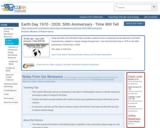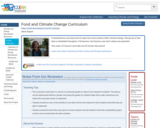
This video features residents of Shishmaref, Alaska, plus environmental journalist Elizabeth Kolbert and scientist John Holdren, exploring the human impacts of global climate change.
- Subject:
- Applied Science
- Ecology
- Environmental Science
- Life Science
- Oceanography
- Physical Science
- Material Type:
- Diagram/Illustration
- Reading
- Provider:
- CLEAN: Climate Literacy and Energy Awareness Network
- Provider Set:
- CLEAN: Climate Literacy and Energy Awareness Network
- Author:
- AAAS
- American Association for the Advancement of Science (AAAS)
- Date Added:
- 05/15/2012


















